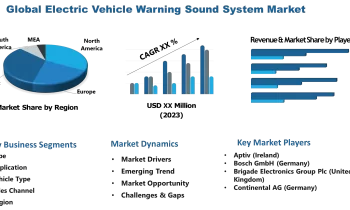
When they invest, investors can use two risk management concepts: risk-on and risk-off. Risk means investing to increase the risk of losing money and increases the chances of gaining more money. Risk-Off means reducing risk by only investing in things with a low risk for loss or high potential for gain. So what’s better? The answer is it depends! Understanding how each method works will help you determine which one is best for your portfolio. Let’s explore!
What Is Risk On?
Risk On is when investors feel confident about the market and are willing to invest in riskier assets to get a higher return. This strategy suits best when the economy is doing well and there is optimism about the future. When confidence is high, people are more likely to take chances and invest in things that may be risky but have the potential to earn a lot of money.
How Does Risk On Work?
The risk-on strategy works by investing in assets with a higher risk and a higher potential return. These assets can be stocks, bonds, commodities, or even real estate. The goal is to get the highest return possible while still being able to sleep at night!
The main benefit of risk is that it has the potential to earn a lot of money. Investors who take risks will get high returns if the market does well. This strategy can also help diversify a portfolio and protect against inflation.
What Is Risk-Off?
Risk-Off is when investors reduce risk by only investing in things with a low risk for loss or high potential for gain. This strategy comes in handy when the economy is not doing well or uncertain about the future. When confidence is low, people are less likely to take chances and invest in things that may be risky.
How Does Risk-Off Work?
The risk-off strategy works by investing in assets with lower risk and a lower potential return. These high-risk assets can be cash, bonds, or even gold. The goal is to protect the money you have and preserve your capital.
The main benefit of risk-off is that it helps preserve capital. This is especially important during economic turmoil when the market is more volatile. Risk-off can also help diversify a portfolio and protect against inflation.
Risk On vs. Risk-Off; Which One Should You Use?
It depends on your risk tolerance and what’s happening in the market. If you’re comfortable taking risks, the risk may be a good strategy. But if you’re worried about losing money, risk-off is a good choice.
P.S. risk-on vs. risk-off can also refer to bond markets! In general, riskier bonds have higher yields/returns than safe bonds. So when the market is more dangerous (risk-on), investors may shift their portfolios to riskier bonds. And when the market is safer (risk-off), investors may move their portfolios to safer bonds. This risk-on/risk-off market dynamic can significantly impact bond prices!

Returns And Risk On Risk Off Market Sentiment
When the risk is on the rise, returns usually follow. Investors are willing to take on more risk when they feel confident about the market. So, if you’re comfortable with taking risks, risk-on may be a good strategy for you.
Conversely, risk-off usually leads to lower returns. This is because investors are less likely to take risks when worried about the market. So, if you’re worried about losing money, risk-off may be a better choice.
Ultimately, it’s up to you to decide which risk management strategy is best for your portfolio—but understanding how risk-on and risk-off work will help you make the decision that’s right for you.
What Happens In A Risk On Market Environment?
Investors are more willing to take chances and invest in riskier assets in a risk-on market environment. This usually happens when the economy is doing well or optimism about the future. When confidence is high, people are more likely to risk their capital to earn a higher return.
If the market does well, risk-on investors gain higher returns. But if the market turns south, they could lose everything. So, it’s essential to understand both the potential rewards and risks before investing in riskier assets.
What Happens In A Risk-Off Market Environment?
Investors reduce risk by only investing in safe assets in a risk-off market environment. This usually happens when the economy is struggling or uncertain about the future. When confidence is low, people are less likely to take chances and invest in riskier assets.
The goal of risk-off investing is to protect capital and preserve your wealth. This strategy can help diversify a portfolio and protect against inflation. But it comes with the trade-off of lower potential returns.
Predicting The Risk On And Risk-Off Cycles

It’s difficult to predict when the risk-on or risk-off cycles will happen. But some factors can give you a clue. For example, risk-on usually occurs when the stock market is doing well. And risk-off usually occurs when the stock market is struggling. So, if you’re trying to predict which cycle is coming next, pay attention to the stock market!
Other factors that can affect the risk-on/risk-off cycles include:
Interest Rates
Higher interest rates usually lead to a risk-off environment because they make borrowing more expensive. This can lead to less spending and investing, hurting economic growth.
Economic Data
If economic data is strong, it can lead to a risk-on environment. As a result, investors will feel confident about the future and be more willing to take risks. But if global economic patterns are weak, it can lead to a risk-off environment. As a result, investors will become more risk-averse and focus on preserving their capital.
Political Events
Uncertainty about upcoming political events and government bonds can lead to a risk-off environment. For example, if there’s a presidential election coming up, investors may become more risk-averse as they wait to see who wins.
The Bottom Line
Risk-on vs. risk-off is a critical concept that every investor should understand. These terms refer to the market cycles of risk-taking risk aversion. Understanding these cycles can help you make better-informed investment decisions.



